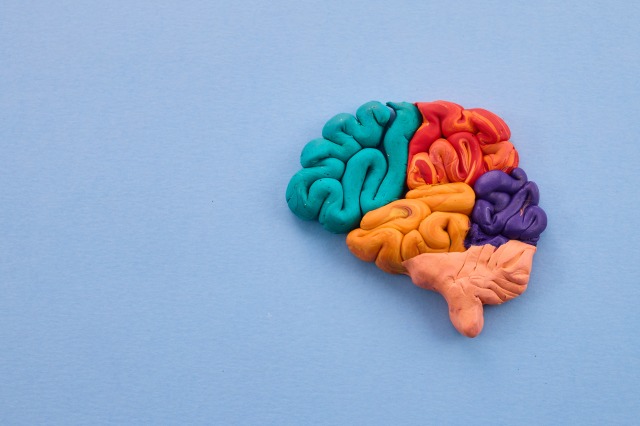Anxiety can be a debilitating condition that affects millions of people worldwide. Fortunately, there are various treatment options available to help individuals manage their anxiety symptoms and improve their overall well-being. One such treatment that has gained popularity in recent years is Eye Movement Desensitization and Reprocessing (EMDR). In this article, we will explore the benefits of EMDR for anxiety and delve into its therapeutic process, the science behind it, and how it compares to other anxiety treatments.
Understanding EMDR and Its Role in Treating Anxiety
What is EMDR?
EMDR, or Eye Movement Desensitization and Reprocessing, is a therapy technique that was originally developed to treat post-traumatic stress disorder (PTSD). However, its effectiveness has been increasingly recognized in the treatment of anxiety disorders as well. EMDR aims to reprocess traumatic or distressing memories and alleviate the associated negative emotions and beliefs.
EMDR is based on the idea that when a person experiences a traumatic event, the memory of that event can become improperly stored in the brain, leading to emotional and behavioral difficulties. By engaging in bilateral stimulation, such as eye movements, taps, or sounds, EMDR helps the brain reprocess these memories, allowing for the integration of new, more adaptive information.

How EMDR Works in Anxiety Treatment
During an EMDR session, the therapist guides the individual through a series of eye movements, taps, or sounds while focusing on the distressing memory or trigger. This bilateral stimulation is believed to activate the brain’s natural healing mechanisms, allowing the individual to process and reframe the negative emotions associated with the anxiety-inducing triggers.
Unlike traditional talk therapies, EMDR focuses less on detailed discussions of traumatic events and more on the individual’s emotional and physical responses. Through this process, EMDR can help reduce anxiety symptoms and improve overall emotional well-being.
Research has shown that EMDR can be particularly effective in treating specific phobias, social anxiety, panic disorder, and generalized anxiety disorder. By targeting the root cause of anxiety symptoms and addressing them at their core, EMDR offers a unique and powerful approach to anxiety treatment.
The Science Behind EMDR for Anxiety
The Psychological Basis of EMDR
One of the core principles of EMDR is the Adaptive Information Processing (AIP) model. This model suggests that distressing experiences and memories become stored in an isolated memory network, making them more difficult to heal. EMDR aims to reprocess these memories by connecting them to more positive and adaptive networks in the brain.

Research has shown that EMDR can lead to significant improvements in anxiety symptoms by facilitating the reintegration of traumatic memories into the individual’s overall memory network. This process promotes adaptive coping mechanisms and reduces the emotional impact of anxiety triggers.
Furthermore, the AIP model highlights the importance of bilateral stimulation, such as eye movements or taps, in facilitating the processing of traumatic memories. This bilateral stimulation is believed to mimic the natural processing that occurs during REM sleep, aiding in the integration of distressing experiences.
EMDR and Neurological Changes
Studies have also shown that EMDR can induce neurological changes in the brain. Research using neuroimaging techniques has revealed that EMDR can have a positive impact on brain networks involved in emotional regulation and memory processing.
This neurobiological evidence supports the efficacy of EMDR for anxiety treatment and provides insight into the changes occurring in the brain during the therapeutic process.
Moreover, neuroplasticity, the brain’s ability to reorganize itself by forming new neural connections, plays a crucial role in the effectiveness of EMDR. Through the process of reprocessing traumatic memories, EMDR promotes neuroplasticity by creating new connections between the traumatic memory networks and more adaptive neural pathways, leading to a reduction in anxiety symptoms.
The Therapeutic Process of EMDR for Anxiety
Preparing for EMDR Therapy
Prior to starting EMDR therapy, it is crucial to establish a safe and trusting relationship with a qualified therapist. During the preparation phase, the therapist will gather information about the individual’s history, current symptoms, and goals for therapy.
This preparatory phase is crucial to ensure that the individual is ready for the intense emotional processing that can occur during EMDR sessions. The therapist will also educate the individual about the therapy process, what to expect, and how to cope with any distress that may arise during and after sessions.
Building a strong therapeutic alliance is fundamental in EMDR therapy as it lays the foundation for a successful treatment journey. The therapist creates a supportive environment where the individual feels safe to explore and process difficult emotions and memories. This phase may involve discussing the individual’s strengths, resources, and coping mechanisms to enhance their resilience throughout the therapy process.
The Stages of EMDR Treatment
EMDR therapy typically consists of eight phases, each with specific objectives and techniques. The initial stages involve history taking, identifying targets for reprocessing, and developing coping skills to manage anxiety and distress.
As the therapy progresses, the individual begins to engage in bilateral stimulation while focusing on the targeted memories or beliefs. This process allows for the reprocessing and desensitization of distressing thoughts and emotions.
Moreover, EMDR therapy incorporates elements of cognitive-behavioral therapy (CBT) to help individuals challenge and reframe negative beliefs and perceptions. By integrating these approaches, EMDR aims to not only alleviate symptoms but also promote lasting changes in how individuals process and respond to triggers.
Throughout the treatment, the therapist regularly assesses the progress and adjusts the therapy plan accordingly. EMDR therapy is often a relatively short-term treatment, with most individuals experiencing significant improvements within a few months of regular sessions.
EMDR vs. Other Anxiety Treatments
Comparing EMDR and Cognitive Behavioral Therapy (CBT)
While cognitive behavioral therapy (CBT) is considered the gold standard for anxiety treatment, EMDR offers some unique advantages. Unlike CBT, which primarily focuses on changing thoughts and behaviors, EMDR targets the underlying emotional distress associated with anxiety triggers.

EMDR’s ability to process and reframe traumatic memories and beliefs can lead to profound and lasting improvements in anxiety symptoms. Additionally, some individuals find EMDR to be a less confrontational approach than traditional talk therapies, making it a viable alternative for those who may be resistant to CBT techniques.
Moreover, EMDR incorporates bilateral stimulation techniques such as eye movements, taps, or sounds to facilitate the processing of distressing memories. This dual attention stimulus is believed to help the brain reprocess traumatic experiences more effectively, leading to reduced emotional reactivity and heightened cognitive integration.
EMDR and Medication: A Comparative Analysis
While medication can be an effective tool for managing anxiety symptoms, it could come with unwanted side effects and potential dependency. EMDR, on the other hand, is a non-invasive and medication-free treatment option.
Research comparing the efficacy of EMDR and medication has shown that EMDR can produce similar or even superior results in reducing anxiety symptoms. Furthermore, EMDR addresses the root cause of anxiety by reprocessing traumatic memories, potentially leading to long-term symptom relief without the need for ongoing medication use.
It is important to note that EMDR is not a quick fix and may require multiple sessions to achieve optimal results. The process involves identifying specific target memories, developing coping mechanisms, and integrating positive beliefs to replace negative ones. This comprehensive approach aims to not only alleviate current anxiety symptoms but also prevent their recurrence in the future.
Potential Side Effects and Risks of EMDR
Understanding the Possible Side Effects
While EMDR is generally well-tolerated, some individuals may experience temporary discomfort or emotional distress during or after sessions. This is a normal part of the therapeutic process, known as the “abreaction,” and typically subsides within a short period.
It’s important to note that the intensity of emotional responses can vary from person to person, and some individuals may find certain memories or sensations particularly challenging to process. This variability underscores the importance of having a skilled therapist who can provide the necessary support and guidance tailored to each individual’s needs.
In rare cases, individuals may experience intensive emotional or physical reactions that require additional support from the therapist. It is important to choose a qualified EMDR therapist to ensure proper monitoring and management of any potential side effects.
Managing Risks and Concerns in EMDR Therapy
To ensure a safe and effective EMDR experience, it is essential to choose a trained therapist who understands the specific techniques and protocols of EMDR. Working with a licensed professional will help minimize any risks and concerns associated with the therapy.
Furthermore, the therapeutic relationship between the client and therapist plays a crucial role in navigating any challenges that may arise during EMDR sessions. Establishing trust and open communication can create a safe space for exploring difficult emotions and memories, ultimately enhancing the therapeutic outcomes.
Additionally, being open and honest with your therapist about any concerns or questions you may have will foster a solid therapeutic alliance and allow for adequate support and guidance throughout the treatment process.
EMDR for Anxiety Treatment at CBH

EMDR offers a promising approach to treating anxiety, allowing individuals to process and reframe distressing memories to reduce the emotional impact of anxiety triggers. Through its unique therapeutic process and significant scientific support, this innovative therapy has proven to be effective in reducing anxiety symptoms and improving overall well-being. Whether used as a standalone treatment or in conjunction with other therapeutic modalities, EMDR can offer hope and relief for individuals struggling with anxiety.
If you’re ready to explore the transformative power of EMDR for anxiety, Compassion Behavioral Health is here to guide you on your journey to recovery. Our dedicated team in South Florida is committed to providing personalized mental health and substance use treatment, ensuring sustainable healing tailored to your unique needs. Don’t let anxiety control your life any longer. Call Us Today and take the first step towards reclaiming your well-being with Compassion Behavioral Health.



